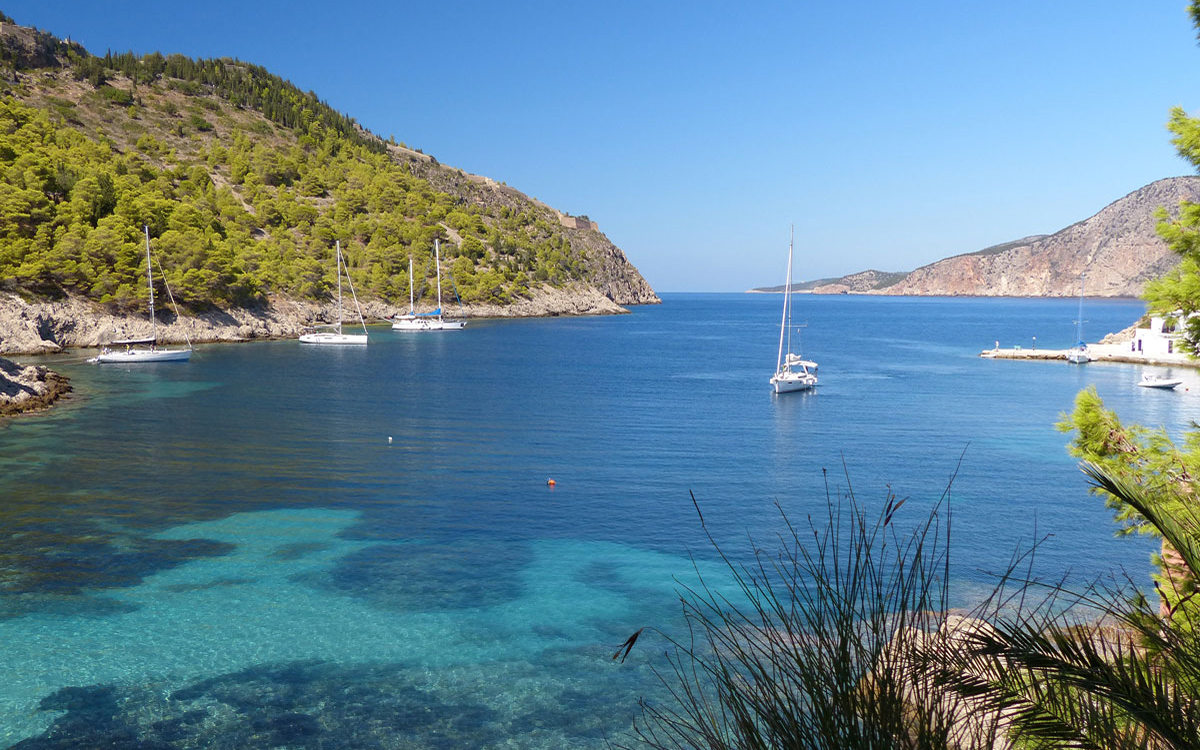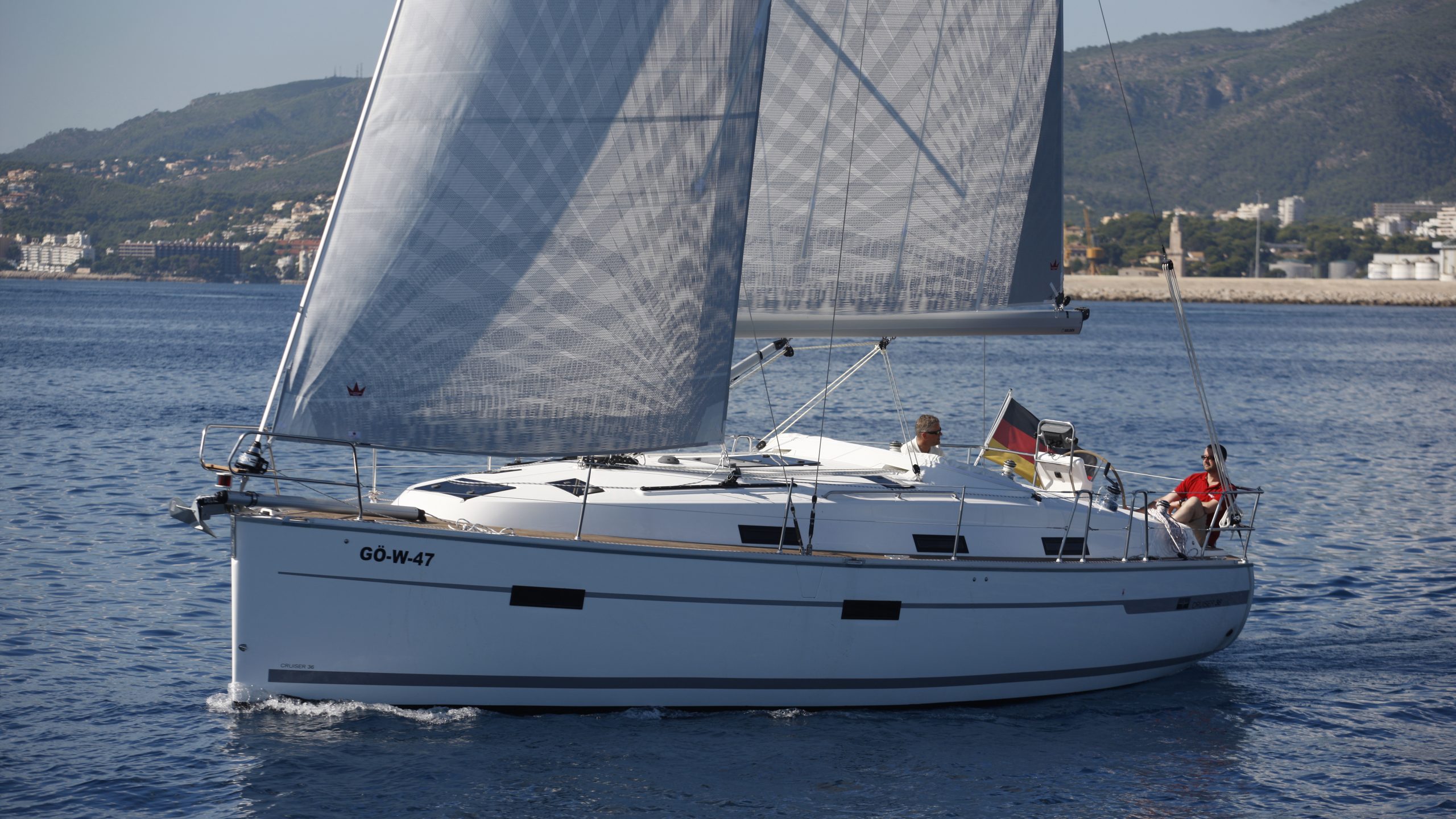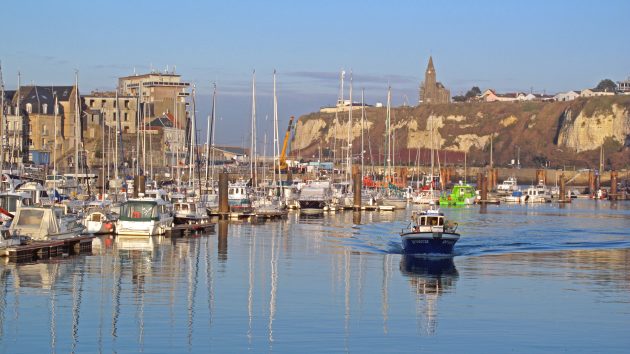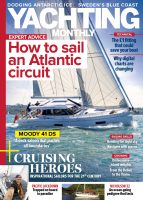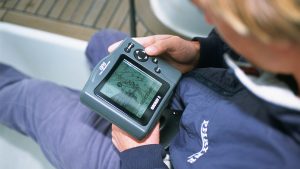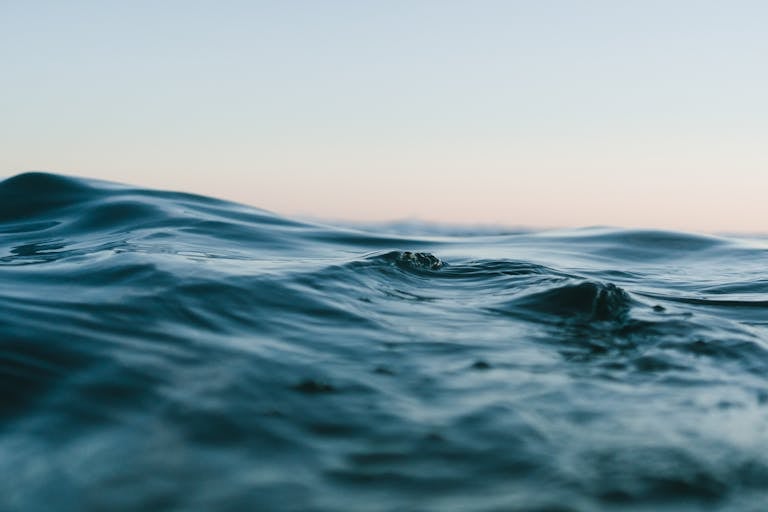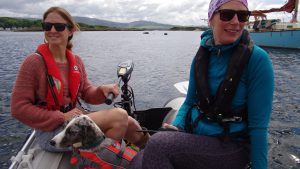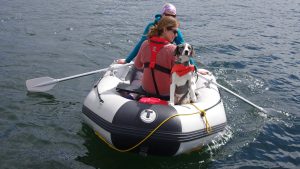If you are sailing to France, here is what you need to know to avoid immigration and customs headaches for a smooth entry and exit from the country
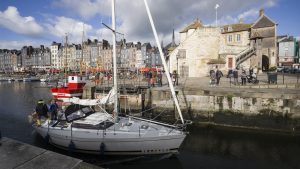
UK sailors planning on sailing to France this summer are being warned that a shortage of officials means not all ports can be treated as Ports of Entry.
Last year, the French authorities aimed to simplify entry and exit for non-EU cruisers by allowing sailors to email their intended passage using a Préavis Police aux Frontières (PAF) Immigration/Notice of Immigration form in advance.
This would allow arrival at any port and not require a designated port.
These forms started to appear on some port websites, such as St Cast and St Quay Portrieux in Brittany, but not all, and it soon became clear that there were not enough French officials to go from port to port to check boat papers and stamp passports.
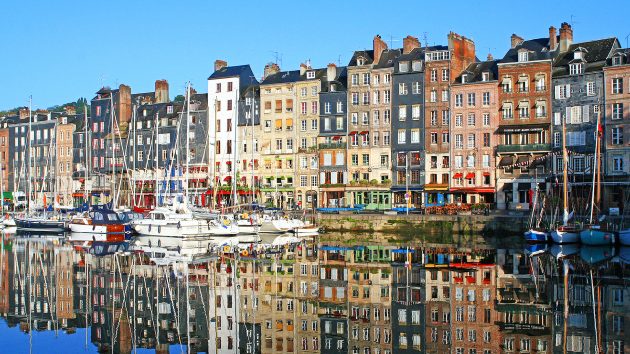
Honfleur in Normandy is one of France’s official Ports of Entry. Credit: Peter Cumberlidge
This resulted in the number of ports included in the Port of Entry scheme to be limited.
According to the Cruising Association (CA), the entire process for checking into and out of France for leisure cruisers from outside the EU remains under review, and is unlikely to change until after the introduction of the new European EES (Entry/Exit System) and ETIAS (European Travel Information and Authorisation System) which is expected to come into effect towards the end of 2022 and early 2023 respectively (since this piece was first published this has been pushed back six months to November 2023. Check schengenvisainfo.com for the very latest updates).
- How to build a website with WordPress and what are the best plugins to use: WordPress Web Design Tutorials: How to build a website with WordPress and what are the best plugins to use. Building a website with WordPress is an excellent choice due to its versatility, ease of use, and a vast array of plugins that enhance functionality. Here’s a comprehensive guide to building a WordPress website, along with recommendations for the best plugins.
- The Most Important Stages and Plugins for WordPress Website Development: Developing a WordPress website requires careful planning, execution, and optimisation to ensure it is functional, user-friendly, and effective. The process can be broken into key stages, and each stage benefits from specific plugins to enhance functionality and performance. Here’s a detailed guide to the most important stages of WordPress website development and the essential plugins for each stage.
- What are the most powerful Tools for SEO in WordPress?: Powerful SEO Tools for WordPress: Search Engine Optimisation (SEO) is essential for improving your WordPress website’s visibility in search engines. Here are the most powerful tools to optimise your site effectively:
- How to add shipping modules in CubeCart: Step 1: Log in to Your CubeCart Admin Panel: Open your web browser and navigate to your CubeCart admin login page. Enter your username and password to log in.
Step 2: Navigate to the Extensions Section: Once logged in, go to the left-hand menu and click on Manage Extensions. From the dropdown, select Extensions.
Step 3: Find Shipping Modules: In the Extensions section, locate the Shipping tab to view available shipping modules. You can browse through the list or use the search function to find a specific module. - Gathering domain and IP information with Whois and Dig: In the digital age, understanding the intricacies of domain and IP information is essential for anyone navigating the online landscape. This article explores two powerful tools—WHOIS and DIG—that help gather valuable insights about websites and their underlying infrastructure. Whether you’re a cybersecurity professional, a web developer, or simply curious about online resources, you will learn how to effectively utilize these tools, interpret their outputs, and apply this knowledge to real-world scenarios.
- What are the best WordPress Security plugins and how to set them up the best way: Read a comprehensive guide on the best WordPress security plugins and how to set them up to ensure optimal protection for your WordPress site.
- Will a headland provide enough shelter?
- Learn How To Purchase Your Own Domain Name with Fastdot.com: Open your web browser and go to Fastdot.com. Navigate to the Domains section, either from the homepage or from the main navigation bar.
Step 2: Search for Your Desired Domain Name: In the domain search bar, type the domain name you want to purchase. Fastdot supports a wide range of domain extensions (TLDs), such as .com, .net, .org, .com.au, and many others. Click the Search Domain button. The system will check the availability of your desired domain name.
Sailing to France: Entry
The CA and the RYA are now advising those sailing the English Channel from the UK to France’s channel ports to choose an official Port of Entry. These are Dunkirk, Calais, Boulogne, Dieppe, Le Havre, Honfleur, Caen/Ouistreham, Cherbourg, Carteret, Granville, St Malo, St Brieuc/Légué, and Roscoff.
The CA has highlighted the although Boulogne is officially a Port of Entry, there are no PAF officials locally to process arrivals and departures, with some arrivals being advised to travel by train to Calais for processing.
From 1 June to 30 September 2022 a temporary concession has been introduced for British and Channel Island nationals visiting Saint Cast and Saint Quay, which will require a modified Declaration of Arrival/Departure form. It can be found here.
On arrival to Saint Cast and Saint Quay, recreational boaters will be required to complete the Declaration of Arrival form, one form is necessary per boat. These must be completed and sent to the marina office email address displayed on the form. The marina office will then forward the completed document to the maritime authorities in Saint-Brieuc for processing.
Once the form has been validated by the authorities, a copy will be returned to the marina office, who will then return it to the boat concerned. This copy should then be kept on-board at all times during the period that the boat remains in the Schengen Area so as to be available in the event of a customs visit, on land or at sea. The boat will then be cleared to sail elsewhere in Brittany.
If entry into the Schengen Area is via the Brittany ports of Saint-Quay or Saint-Cast, then departure from the Schengen Area of Brittany must also be via either of these two ports.
On departure from Saint Cast and Saint Quay, recreational boaters must download and complete the modified Declaration of Departure document. Similarly, one copy only is needed per boat and should be completed and sent to the email address of the departure marina. The marina office will then forward the completed document to the authorities in Saint-Brieuc. Once validated, a copy will be returned to the marina for onward transmission to the boat concerned. The boat will then be clear to leave the Schengen Area.
France’s Atlantic coast Ports of Entry are: Brest, Gironde Estuary & Bordeaux, Hendaye-Behobie, La Rochelle, Les Sables d’Olonne, Lorient, Nantes and St Nazaire.
France’s Mediterranean coast Ports of Entry are: Antibes, Bandol, Cannes, Cassis, Frejus-Saint Raphael (Port Santa Lucia), Gulfe de Fos (Port St Louis, Port Napoleon, St-Gervais), Hyères-Plage, La Ciotat, Le Lavandou, Marseille, Menton-Garavan, Nice, Port de Bouc, Port la Nouvelle,Port-Vendres, Sainte Maxime, Sanary, Sete, St Tropez, Toulon-la Seyne.
Those sailing to a port or marina that is not a Port of Entry, need to check whether an immigration form is available and what, if any, special arrangements for arrival have been made with the authorities.
If a form is available, then complete and send it to the email address on the form. If you do not get a reply to your email, call the named local Border Police (Police Aux Frontières – PAF) or Customs (Douane) to ask for advice.
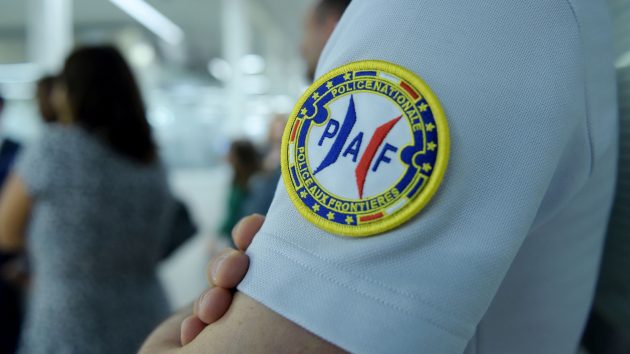
Police Aux Frontières officers handle sailors checking into and out of France. Credit: Getty
On arrival, all non-EU crew will need to see the local PAF or Customs (Douane) for immigration and customs.
This may involve travelling to the nearest PAF office; many are located away from marinas and are not open 24 hours. Boat papers may also have to be presented.
In case of extreme weather or other force majeure, boats from a non-EU country can enter any port or harbour with permission from the harbourmaster, but the crew must report the boat’s presence to the authorities at the nearest Port of Entry, and undergo immigration and customs checks.
Sailing to France: Departure
On departure, the same process should be followed as arrival.
UK cruisers need to make sure passports are stamped on departure to avoid overstaying in the Schengen zone which could result in future entry being denied.
Since Brexit, visits to the Schengen zone are limited to 90 days in every 180 days for UK nationals.
Both the CA and RYA warn that PAF offices are not open 24/7 and crew should plan around this.
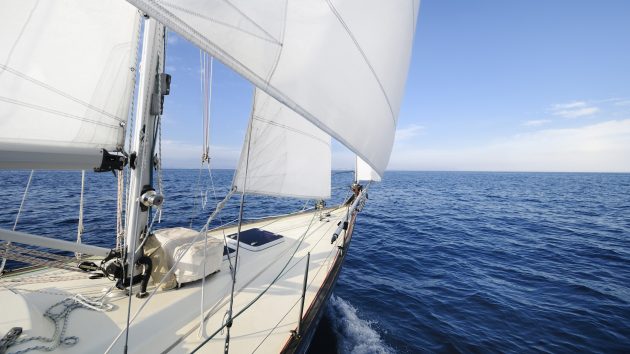
Make sure you check out before leaving France to avoid overstaying in the Schengen Zone. Credit: Getty
The CA’s channel section secretary and council chair, Bob Garrett said the process may ‘seem onerous, but it is a legal requirement and those of us who have sailed beyond Europe will be aware of these processes in other countries.’
‘Other non-EU sailors visiting the EU have always had such processes for sailing to France, without the advantage of some of the flexibility now being offered. All reports the Cruising Association has received from its members of interaction with French officials have been good – friendly, helpful and accommodating. They want visitors for the friendship, the camaraderie and the tourist business, so they are making it as easy as possible within the legal framework and resources available,’ he added.
Sailing to and from the UK
Anyone cruising to and from the UK needs to inform Border Force and Her Majesty’s Revenue and Customs.
The newly launched single Pleasure Craft Reporting (sPCR) online platform – www.spcr.homeoffice.gov.uk – is now the preferred option for reporting journeys for anyone leaving or entering the UK. This includes cruisers sailing from or to the Channel Islands and Ireland, as well as those sailing to or from other EU countries and the rest of the world.
The new platform is currently in ‘beta’ mode but will eventually replace the C1331 postal form and e-C1331 online forms. The eC1331 is only available as an Excel document. Details, such as passport numbers, can be stored to make filling out the form on return easier. It has also been renamed: ‘Pleasure craft on non-UK voyages: leaving or arriving in the UK (pleasure craft report (sPCR) fallback template.
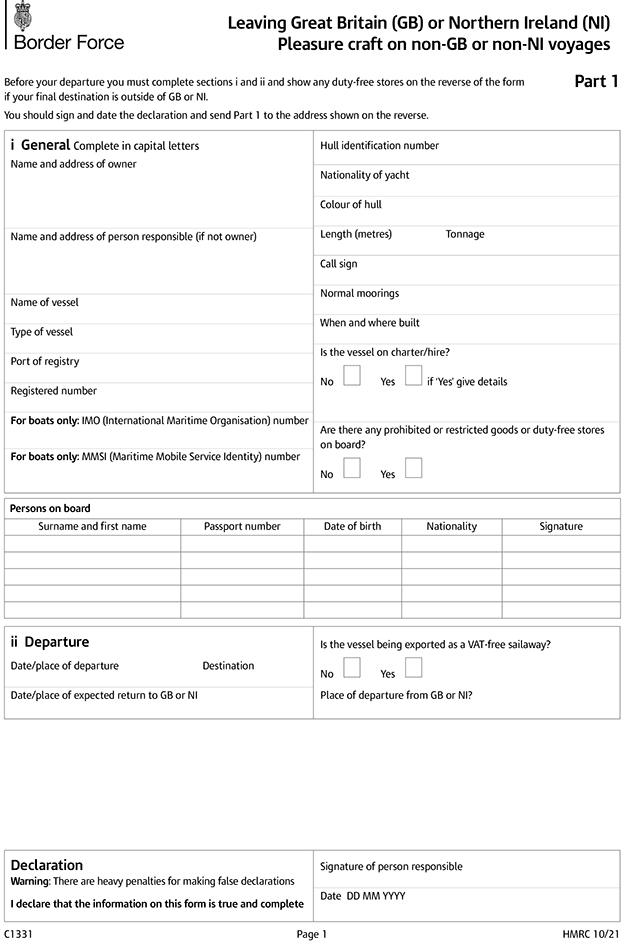
The C1331 can be printed off and filled in before being sent to Border Force. The eC1331 can be emailed. Credit: HMRC
New users of the online service – www.spcr.homeoffice.gov.uk – will first be required to complete a ‘once only’ account registration, before being required to ‘add a pleasure craft’, and then proceeding to submit voyage plan data including: Boat Registration Number, MMSI and Callsign, AIS –an AIS transponder, not just a receiver, Skipper’s details, Full names, date and place of birth, passport or travel document details for all people on board, Goods documentation and Date and estimated departure and arrival locations and times for your voyage plan.
The voyage plan must be submitted at least 2 hours but not more than 24 hours before departure.
For those concerned about giving estimates of departure and especially arrival time, the ‘beta’ version allows a two-hour range.
The Cruising Association has discussed with UK Border Force the difficulty of giving relatively precise arrival times at the end of longer passages, and the UK Border Force advice is to give your best estimate and then update your report if you believe that either your arrival place will change, or the time will be outside the range you gave.
Data can be updated online or skippers can telephone the appropriate UK Border Force Operational centre* for the area of your arrival as soon as you can reasonably do so.
Pleasure craft arriving to the UK from outside the UK (including the Channel Islands) must fly the ‘Q’ flag as soon as entering UK waters (the 12 mile limit), and unless you are told otherwise by Border Force, you should call National Yachtline on 0800 123 2012 on arrival who may give you clearance to leave, tell you to wait for a Border Force Officer or to contact one of the regional numbers below.
The ‘Q’ flag must remain flying and all crew must stay on board until you have received clearance from a Border Force Officer.
Both the eC1331 and C1331 can be found here.
The eC1331 requires a United Nations Code for Trade and Transport Locations (UN/LOCODE) for the departure and arrival points.
Some skippers have experienced problems finding the UN/LOCODE of their destination, or reported the link on the eC1331 to the UN/LOCODE is not working, and this is being looked at.
A list of UN/LOCODEs can be found here.
Alternatively skippers can write in the full name of their departure and arrival locations along with the latitude and longitude coordinates.
Sailors using the eC1331 will need to complete two forms – one of the outward voyage, one for inward voyage.
If printing out the C1331, fill in part 1 and post to Border Force at the address provided.
For the return, fill in part 2 and ring Yachtline an hour before arrival.
The number is 0300 123 2012. It is open 24 hours a day, 7 days a week
Sailing to France: real life experience
Richard Turner and his wife, Bernadette, have sailed to France twice in 2022, aboard their Beneteau Oceanis 331, Jupiter, as part of a long term cruise around the UK.
Their first trip was in February, and they sailed from Falmouth to St Malo.
‘We arrived at the marina office and the staff didn’t know what we should be doing as far as checking into France. Instead, they suggested the main police station in the town. Officers there didn’t know but suggested the Police Aux Frontières (PAF) at the ferry terminal. It transpired the PAF officers had never done it before but they did stamp our passports, but didn’t ask for boat papers, or even visit the boat,’ explained Richard.
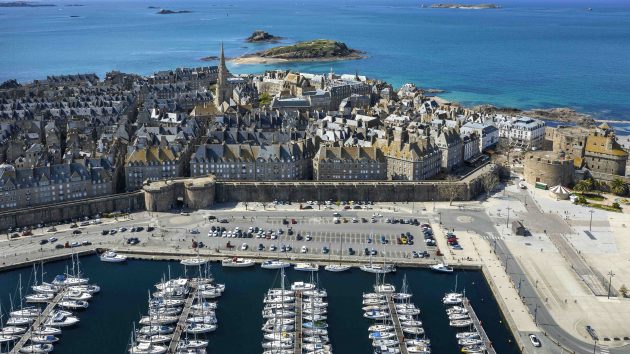
Roger and Bernadette chose to sail from Falmouth to St Malo, which is a port of entry. Credit: Getty
The couple cruised the coast but returned to St Malo to check out of France. The PAF in St Malo is only open from 0800-1600, Monday to Saturday. As Richard and Bernadette were leaving on a Sunday, their passports were stamped the day before.
Having cruised the Channel Islands, Richard and Bernadette returned to France due to weather.
Once again, when they arrived at the marina office in Cherbourg, staff didn’t ask them to check into France. When Richard inquired, marina staff rang the PAF office at the ferry port in Cherbourg and two officers visited the marina to stamp their passports. Again, the boat papers were not looked at and a visit to the boat wasn’t required.
When checking out of France, Richard and Bernadette visited the PAF office at the ferry port to get their passports stamped.
‘Everyone I speak to in the UK is shying away from going to France as they think it will be a nightmare, this is not the case,’ said Richard.
‘All the French marinas are desperate for us to come; a lot of them, like Cherbourg, are quite empty.’
Continues below…

Sailing the English Channel for the first time
Sailing the English Channel for the first time can be a daunting prospect, especially if your sailing experience so far…
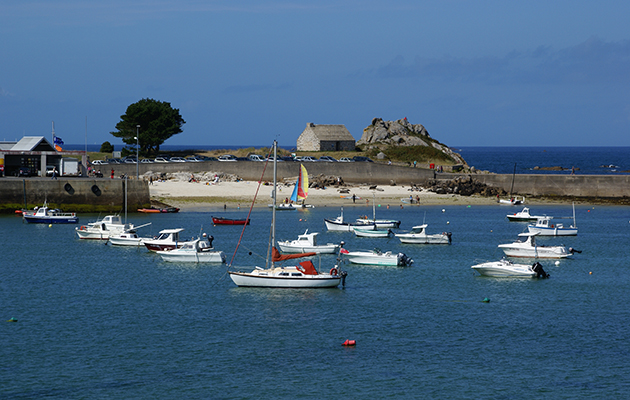
How to sail to France from the UK
For home-waters sailors who are considering a holiday cruise to France, Ken Endean looks at the options for making a…
